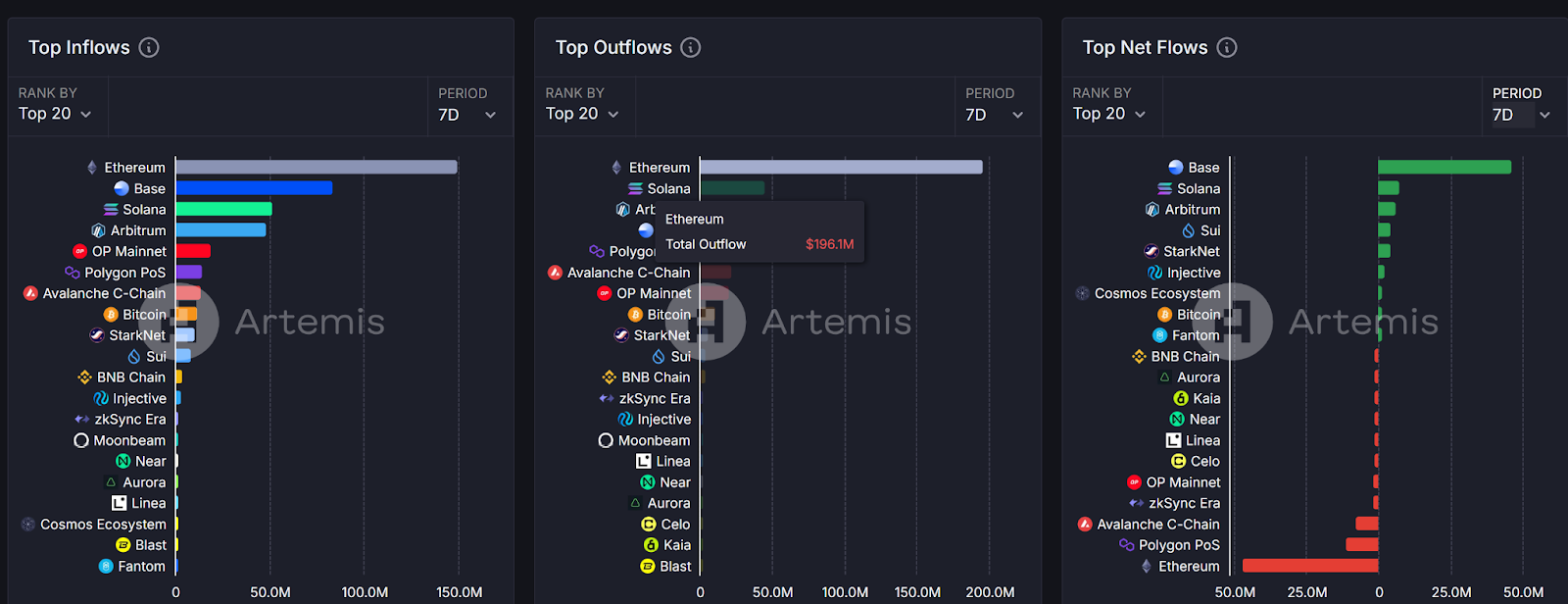The $1.4 billion ETH theft nightmare: What impact does the Bybit security incident have on Ethereum and the cryptocurrency industry?
*Author: Frank, *PANews
A major security incident has once again occurred at a cryptocurrency exchange, following the theft at Bybit. On the evening of February 21, 2025, on-chain detective ZachXBT issued an alert on platform X, stating that abnormal fund outflows had been detected from addresses associated with Bybit, involving an amount as high as $1.46 billion. After confirmation from security teams such as SlowMist and PeckShield, it was determined that the incident involved hackers controlling Bybit's ETH multi-signature cold wallet through a UI deception attack, stealing 491,000 ETH (approximately $1.4 billion at the time). Following the news, the market quickly fell into panic: users rushed to withdraw funds, ETH prices plummeted by 8%, and over $400 million in contracts were liquidated—an FTX-style collapse seemed imminent.
Fortunately, Bybit's official response was swift, explaining that one ETH cold wallet had been compromised, while other asset categories were unaffected, and assuring that there were sufficient funds to meet user withdrawal demands. Additionally, exchanges like Bitget and Binance transferred over $4 billion in funds to address the crisis, temporarily calming the situation. After a day of sharp declines, the price of Ethereum rebounded back above $2,700.
The ripples from the incident have not yet subsided, and the hacker theft has once again sounded the alarm for the industry, especially as the FTX incident is nearing its conclusion and repayments are beginning. As the primary asset stolen, what profound impact will this have on the Ethereum ecosystem? Perhaps this is something the industry needs to contemplate further.
Limited Cross-Chain Bridge Liquidity, Hackers May Find It Difficult to Sell Coins Quickly
The market is the most affected part. Before the news broke, the price of ETH had risen to a peak of $2,845. Under the catalysis of market panic, the price of ETH briefly dropped by 8%, with over $400 million in liquidations across the network. Thanks to Bybit's rapid response and liquidity support from exchanges like Bitget and Binance, the price of ETH recovered within 24 hours, and market panic temporarily eased.
However, the majority of the funds stolen by the hackers have not yet been sold, and in the following period, the hackers will urgently need to launder these funds on-chain and exchange them for other cryptocurrencies. Therefore, there will still be a certain test of ETH's on-chain absorption capacity.
Moreover, analysis from several security firms indicates that the perpetrators are a North Korean hacker group. If this assumption is correct, then the possibility of recovering the funds is very slim.

According to data from Artemis, in the past seven days, the on-chain outflow of ETH was only $196 million, while the inflow was approximately $149 million. If the hackers choose to transfer these funds to other chains in a short period, the on-chain outflow of ETH could potentially increase tenfold in a short time. The reality that ETH's on-chain depth will be under pressure in the near future is unavoidable.
Additionally, most cross-chain bridges' liquidity pools cannot independently bear such a large fund transfer. For example, the Chainflip cross-chain bridge used by hackers on February 22 had a total liquidity of about $17 million. Other cross-chain bridges also seem unable to accommodate such a volume of funds. 
On the other hand, the Ethereum ecosystem may be the most decentralized public chain after Bitcoin. Hackers are unlikely to choose to transfer funds into the ecosystems of other public chains. From this perspective, hackers may still primarily focus on mixing coins in the short term and will not conduct large-scale fund conversions on-chain. Therefore, the test of on-chain depth may not be immediate, and the gradual digestion of funds will have a limited impact on the market.
Reflecting on the "Complexity Premium" of Smart Contracts: Should Ethereum Move Towards Simplification?
Aside from market impacts, Ethereum's technical direction may also undergo some changes as a result. Looking back at a similar hacking incident in 2024, during the theft of WazirX, the hackers also stole ETH tokens.
The reasons are twofold: on one hand, ETH is the second-largest token by market capitalization after BTC, and its market depth will not collapse due to one or two attacks, making it a stable asset type for hackers. On the other hand, it relates to the complex smart contract functionalities of Ethereum. Compared to other new public chains like Solana, Ethereum's Turing completeness grants smart contracts infinite possibilities, but it also leads to complex interaction layers (e.g., multi-signature wallets relying on multiple proxy calls from Safe contracts), resulting in a much larger attack surface than Bitcoin's UTXO model or Solana's native account model.
Therefore, as more security attacks occur on Ethereum, the technical direction of Ethereum may consider how to simplify smart contracts or introduce technological changes that confirm transactions through biometric features or similar hardware devices at the application layer of multi-signature wallets.
From an ecological perspective, projects within the Ethereum ecosystem that enhance security through hardware may find certain opportunities. This includes Safe, which was used in this incident, potentially mandating the introduction of "secondary semantic verification" (e.g., visual verification of transaction signatures), similar to the physical confirmation mechanisms of hardware wallets.
Of course, the above potential changes hinge on whether the Ethereum ecosystem takes this incident as a wake-up call. After all, in a state of poor data performance, security has become the last line of defense for the Ethereum ecosystem. If security is compromised, it may lead to greater disappointment in the Ethereum ecosystem across the market.
A Wake-Up Call for the Industry: It's Time to Build a Hacker Firewall
Certainly, this incident has deeper potential implications for the entire cryptocurrency industry ecosystem. For instance, the asset management methods of exchanges may require more reform.
Or, will this give rise to insurance services for exchanges? The previous collapse of FTX prompted exchanges to begin emphasizing asset transparency and publicly disclose their asset scales. From a certain perspective, the widespread implementation of this measure has become a crucial reason why Bybit did not repeat the same mistakes. In contrast, another reason why this hacking incident did not lead to a large-scale bank run is that multiple exchanges and industry institutions quickly extended a helping hand, stabilizing market sentiment.
From the previous collapse of FTX, the last straw that broke the camel's back was the occurrence of a bank run. Fortunately, Bybit received assistance from its peers, but regardless, this assistance is essentially a human factor weighed after considering pros and cons. If another exchange faces a similar crisis in the future and does not receive assistance from peers after evaluation, will the market be drawn into an FTX-like cycle again? Therefore, perhaps exchanges or third parties will have more motivation to promote the development of insurance services for exchanges after this incident.
In addition, the crypto industry has long been plagued by North Korean hackers. To prevent similar incidents from occurring, on one hand, the industry should further strengthen its security levels. On the other hand, whether the crypto world will initiate a wave of establishing hacker firewalls also becomes a topic worth关注 for the entire industry. For example, can various project parties establish a unified firewall to block the flow of hacker funds? Of course, this process will be much more complex, and how to achieve such measures without sacrificing decentralization may become the main topic of discussion. Just as CZ suggested Bybit stop withdrawals after the incident, it sparked considerable controversy.
However, the establishment of a hacker firewall may have a greater significance not just to prevent another exchange from collapsing, but also for those users who frequently suffer from hacker intrusions but remain unnoticed. After all, they lack the power to coordinate the entire network to stop hackers, and each attack has a greater impact on retail investors.
Although the Bybit incident ultimately did not evolve into a systemic collapse, the vulnerabilities exposed in cold wallet interactions, the liquidity bottlenecks of cross-chain bridges, and the temporary nature of industry mutual assistance mechanisms have sounded the alarm for the Ethereum ecosystem and the entire crypto industry—only by building an attack-resistant underlying architecture and institutionalized risk buffer mechanisms can crises truly be transformed into evolutionary momentum.










